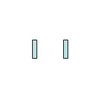The standard household (hotel) electrical supply in Vietnam is 220 volt, 50 Hertz, but you may find that 110 volt, 50 Hertz outlets are still in use in some places. In Vietnam, the standard socket accepts a two round pins plug without a ground pin (Type A), but non-standard two flat blade (Type B) or two rectangular blade sockets and plugs are still in use.
Some modern hotels and office blocks have three pin round (Type D) or UK three pin square sockets (Type C). See below for diagrams and international naming conventions.
| Outlet Diagram | American Type | Other Designations |
|---|---|---|
 Vietnamese Type “A” |
C | “Europlug” CEE 7/16 |
 Vietnamese Type “B” |
A | NEMA 1 |
 Vietnamese Type “C” |
G | BS 1363 |
 Vietnamese Type “D” |
D | BS 546 |
Before traveling to Vietnam, please survey your various items that you will need and that require electricity to operate. Verify you have the proper adapters, converters, or transformers to get electricity in Vietnam.
Adapters do not convert electricity. They simply allow a dual-voltage appliance, a transformer or a converter from one country to be plugged into the wall outlet of another country. Adapters are relatively inexpensive and should you forget one, they are readily available for purchase throughout Vietnam and many hotels have them for you to use as a convenience to their guests.
Transformers and converters can both step-up and step-down the voltage depending on the requirement for each particular device or appliance. There is a major difference in their use though. Converters should only be used with “electric” products. Electric products are simple heating devices or have mechanical motors.
Examples are hair dryers, steam irons, shavers, toothbrushes or small fans. Most converters are not designed for “continuous duty” and should only be used for short periods of time (1 to 2 hours). Additionally, most converters can only be used for ungrounded appliances (2 pins on the plug). Converters must be unplugged from the wall when not in use.
Most items that may require a converter will be supplied by typical tourist class hotels, some of which also feature wall outlets which automatically convert. If you choose local class hotels, and these types of items are essential for your comfort, you should strongly consider bringing a converter with you.
Transformers also step-up or step-down the voltage, but they are more expensive than converters and are used with “electronic” products. Electronic products have a chip or circuit. Examples are radios, CD or DVD players, shavers, camcorder battery chargers, computers, printers, fax machines, televisions and answering machines.
Transformers can also be used with electric appliances and may be operated continually for many days. The advantage of converters, however, is that they are lighter and less expensive.
Computers are electronic devices and therefore they must be used with a transformer, unless they are dual voltage. Fortunately, most laptop battery chargers and AC adapters are dual voltage, so they can be used with only a plug adapter for the country you will be visiting.
The voltage in Vietnam is 220V. U.S. outlets are 120V. Most new devices (phones and laptops) can handle the different voltage rates, but some devices only work on the U.S. standard of 120V. Check your device to see what voltage range it handles. Most transformer blocks will have an “Input” line that defines its voltage capacity. For example, “Input: 100 – 240V” means that it will work on voltages from 100V to 240V. If your transformer can’t handle the different voltage, you’ll need to purchase a voltage converter.
Contact us to plan your vacation, today!